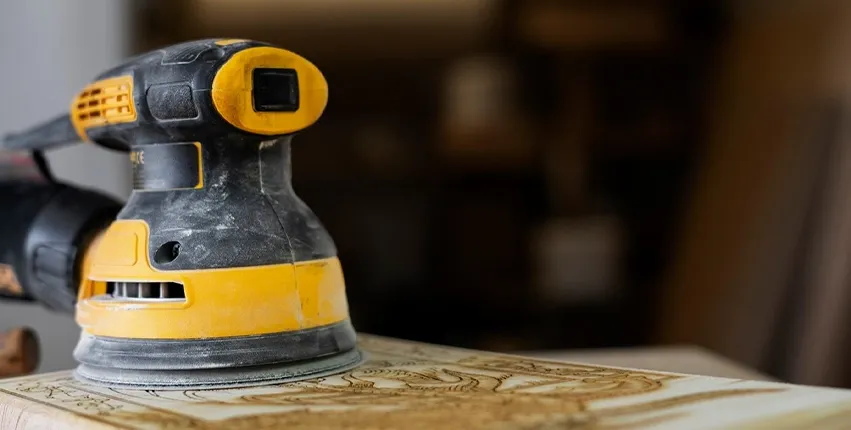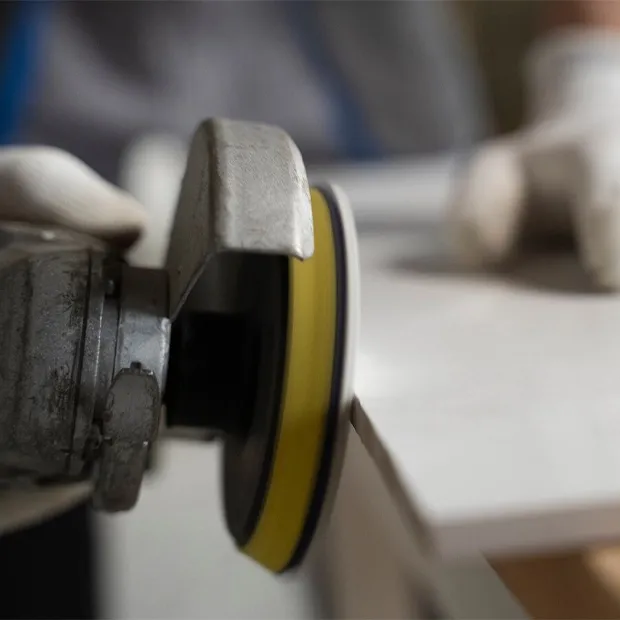Oscillating Sander Machine
Oscillating sander machine is a commonly preferred tool, especially for smoothing wooden and metal surfaces. Thanks to its vibrating working principle, it abrades the surface without leaving deep marks. These machines, which offer ergonomic designs for both amateur and professional users, provide great ease in precision sanding tasks.
Oscillating sander machine is a practical solution that saves time in applications such as furniture making and automotive surface treatments. When the machine’s vibration power is combined with the quality of the sandpaper, the desired smoothness is easily achieved on the surface. Thanks to various sanding bases and speed adjustments, it can adapt to any project. When combined with a dust bag or suction system, the working environment remains cleaner. This provides a significant advantage in terms of user health.
Advantages of the oscillating sander machine include:
Enables smoother sanding without leaving marks on the surface.
Provides ideal control for both fine and coarse tasks.
Creates a clean and dust-free working environment.
Reduces wrist fatigue even during extended use.
Offers ease of use on different surfaces.
Increases the machine’s maneuverability.

What is an Oscillating Sander Machine?
The oscillating sander machine is a highly functional tool used in surface correction and smoothing operations. These machines feature a special mechanism that works with rotational and back-and-forth vibrations. In this way, excess material on the surface is abraded in a controlled manner to achieve the desired level of smoothness. Its biggest advantage is that it provides precise results on different materials.
The machine’s working principle is based on oscillating movement. Thanks to this motion, the sandpaper operates by rotating and making small circular oscillations without damaging the surface. It performs well on many different surfaces such as wood, metal, and plastic. The sanding pad is one of the replaceable parts of these devices and works compatibly with various types of sandpaper.
It is frequently used in the following areas:
Some models offer the user more precise control with their vibrating sanding feature. This is particularly advantageous when detailed sanding is needed in narrow areas. On the other hand, orbital sander models, which use circular motion, perform effectively on larger surfaces.
Sanding with these machines provides much smoother and mark-free results compared to traditional methods. Various precautions can also be taken against heat and dust during surface abrasion. This extends the life of the machine and increases work safety.
Frequently Asked Questions
The oscillating sander works with circular and vibrating movements, while a regular sander is usually applied manually with back-and-forth movements on a flat surface. Therefore, oscillating sanders offer smoother, mark-free, and less tiring results.
They can be safely used on a variety of surfaces such as wood, metal, plastic, plaster, and filler. By selecting the appropriate sandpaper for the surface type, smoothness can be achieved.
For coarse sanding, low-grit sandpapers (60–80); for surface correction, medium-grit (100–150); and for finishing, fine-grit sandpapers (180–240 and above) should be preferred.
After unplugging the machine, the old sandpaper is removed using the hook-and-loop system or clamp mechanism on the sanding base. The new paper is placed and secured properly. Before each use, make sure it is in full contact with the base.
To achieve smooth results in your projects using an oscillating sander machine, you can contact Eko Kaynak.

